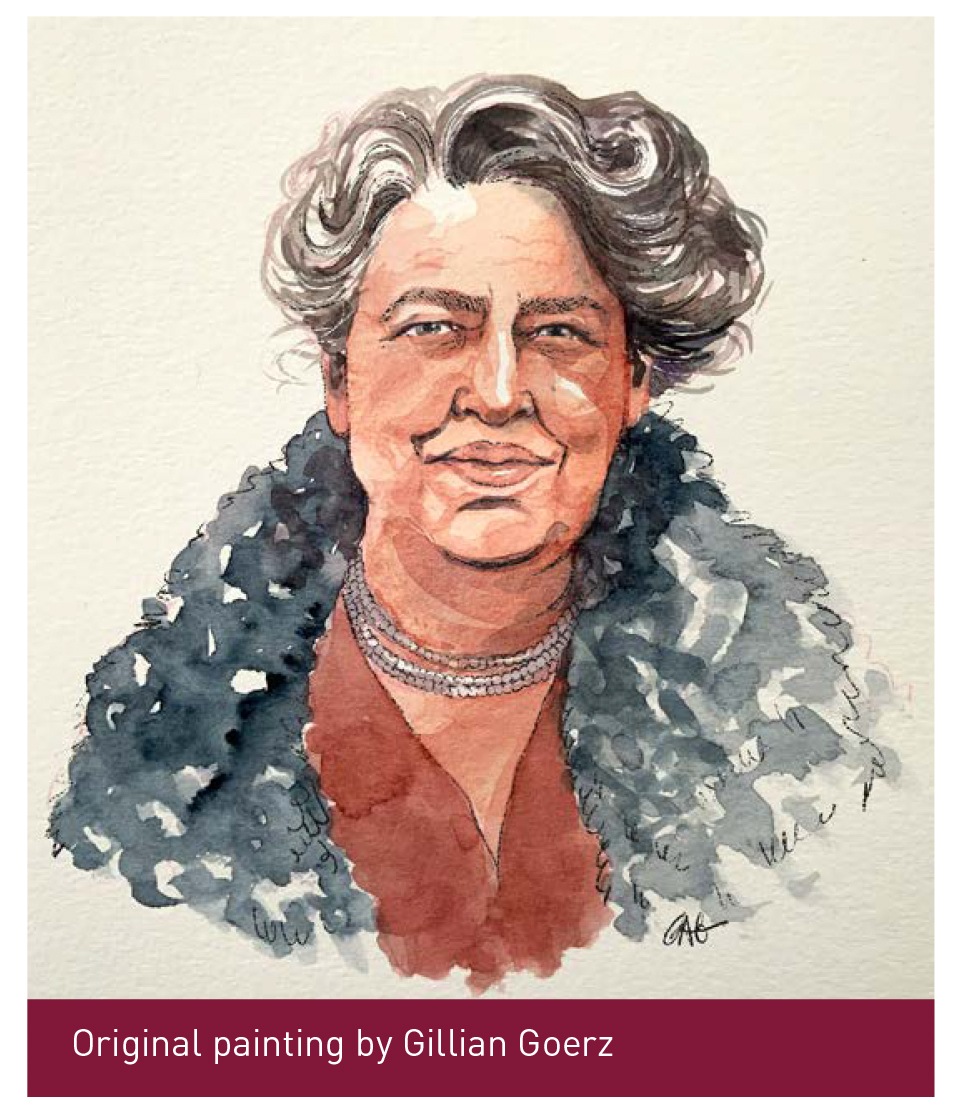How the former U.S. First Lady paved the way for women’s independence
Former First Lady Eleanor Roosevelt was a tireless advocate for women and social justice, and left an indelible mark on society. Eleanor was born on October 11, 1884 in Manhattan, New York, into a family that was part of the New York establishment. She lost both her parents by the age of 10 and was raised by relatives until the age of 15. She attended Allenswood Boarding Academy, a finishing school in Wimbledon, England, from 1899 to 1902. The headmistress, Marie Souvestre, was an educator who sought to cultivate independence and social responsibility in young women. She took a special interest in Roosevelt, who flourished under her leadership.1 At 18, Eleanor was summoned home to New York City by her grandmother to make her social debut. After her return she became actively involved in social service work, joined the Junior League and taught impoverished immigrant children at the Rivington Street Settlement House.2

Eleanor married Franklin Roosevelt in 1905, and together they had six children, five of whom survived into adulthood. In addtion to raising her family, Eleanor became active in the American Red Cross and in Navy hospitals during World War I. In the 1920s, she participated in the League of Women Voters, joined the Women’s Trade Union League (WTUL), and worked for the Women’s Division of the New York State Democratic Committee. Together with her friends, she established the Todhunter School, a private girls’ school in New York City. Eleanor taught courses in American literature and history, and emphasized independent thought and social engagement in her teachings.2
In March 1933, her husband, Franklin Roosevelt, was named the 32nd President of the United States. He became the only president to serve more than two terms in office and Eleanor would become the longest serving First Lady.
Eleanor leveraged her position to ensure that women, youth, and those living in poverty or at the margins of society had opportunities to enjoy a peaceful, equitable and comfortable life—regardless of colour, age, background or discrimination on any other grounds. She raised awareness and shared her beliefs in her daily syndicated newspaper column, My Day, which she established in 1935 and continued until her death.1
In 1935, in the midst of a Great Depression that saw youth unemployment rise to 30%, Eleanor advocated strongly for government intervention. In response, the National Youth Administration (NYA) was established to focus on providing work and education for Americans between the ages of 16 and 25.3
On March 3, 1935, Eleanor delivered a seminal speech on national radio about the role of women in family budgeting and investing. Eleanor’s advice was as practical and sensible then as it is today. She noted that, “A little systematic savings and investing would save many heartaches for the ages and give many a youth a better start in life.”4 To listen to this speech in its entirety, please follow the link here.4
Eleanor’s influence continued well past her time as First Lady. She would go on to serve as U.S. delegate to the United Nations, where she oversaw the drafting and passage of the Universal Human Declaration of Rights, one of her most significant achievements. At the request of President John Kennedy, she also headed the first Presidential Commission on the Status of Women.2
Eleanor passed away on November 6, 1962 at age 78. Believing that, “The future belongs to those who believe in the beauty of their dreams,”5 Eleanor left an enduring legacy that continues to guide and benefit generations of women.
1. “Eleanor Roosevelt Biography,” 2020. May 21, 2020. https://www. fdrlibrary.org/er-biography.
2. “Eleanor Roosevelt,” 2009. May 20, 2020. https://www.history.com/topics/ first-ladies/eleanor-roosevelt
3. “National Youth Administration,” 2020. May 20, 2020. https://en.wikipedia. org/wiki/National_Youth_Administration
4. “Eleanor Roosevelt: Ten Years From Now,” March 19, 2020. https://www. americanradioworks.org/eleanor-roosevelt-ten-years-from-now/
5. “Eleanor Roosevelt,” 2016. March 19, 2020. https://myhero.com/E_ Roosevelt_dnhs_as_US_2016_ul
This post is presented for illustrative and discussion purposes only. It is not intended to provide investment advice and does not consider unique objectives, constraints or financial needs. Under no circumstances does this post suggest that you should time the market in any way or make investment decisions based on the content. Select securities may be used as examples to illustrate Burgundy’s investment philosophy. Burgundy funds or portfolios may or may not hold such securities for the whole demonstrated period. Investors are advised that their investments are not guaranteed, their values change frequently and past performance may not be repeated. This post is not intended as an offer to invest in any investment strategy presented by Burgundy. The information contained in this post is the opinion of Burgundy Asset Management and/or its employees as of the date of the post and is subject to change without notice. Please refer to the Legal section of this website for additional information.

